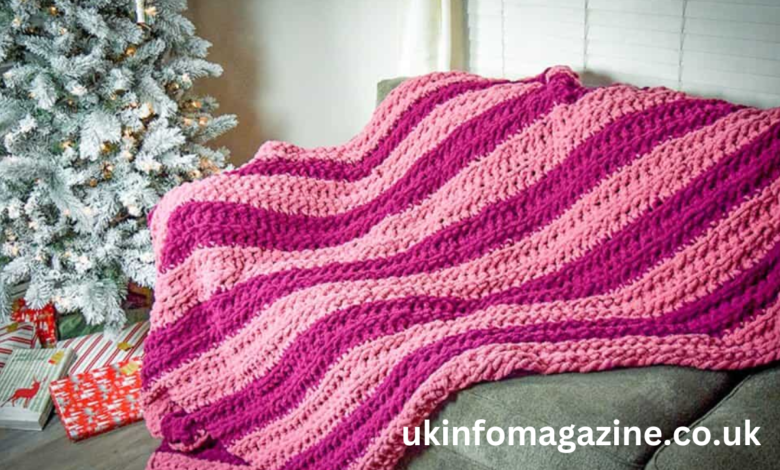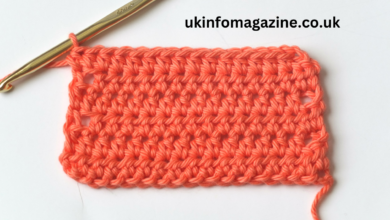The Art and Craft of Crochet Blankets A Complete Guide

Crocheting blankets is more than just a craft; it’s a beautiful way to express creativity, create warmth, and even connect with a tradition that spans centuries. Whether you’re a seasoned crocheter or a curious beginner, crafting a croc het blanket can be an immensely rewarding experience. With endless patterns, yarns, and techniques to explore, the possibilities are as vast as your imagination.
In this article, we’ll dive into everything you need to know about crochet blankets. From selecting materials and understanding patterns to creating your masterpiece, we’ll guide you through every step of the process.
The History of Crochet Blankets
The art of crochet has a rich history, believed to have originated in Europe in the 19th century. Early crochet was often used as a more affordable alternative to lace and was cherished for its intricate patterns and texture. Over time, crocheting evolved from a functional craft into a beloved hobby, with crochet blankets becoming a staple in homes worldwide. Today, croc het blankets represent warmth, love, and creativity, making them a perfect project for crafters of all skill levels.
Why Croc het Blankets Are So Popular
Croc het blankets hold a special place in the crafting world for several reasons:
- Versatility: They can be as simple or complex as you like, accommodating all skill levels.
- Customization: With countless patterns, colors, and yarn types available, no two croc het blankets are ever the same.
- Practicality: Croc het blankets aren’t just decorative; they’re functional, providing warmth and comfort.
- Sentimental Value: Handmade blankets often carry a deep emotional connection, making them cherished gifts.
Choosing Materials for Your Crochet Blanket
1. Yarn
Selecting the right yarn is the foundation of any successful croc het blanket. Consider the following factors:
- Fiber Type:
- Acrylic: Durable, affordable, and available in a wide range of colors.
- Wool: Warm and natural, perfect for cold-weather blankets.
- Cotton: Lightweight and breathable, ideal for summer throws.
- Blends: Combine the best qualities of multiple fibers.
- Weight: Yarn weight determines the thickness of your blanket. Common weights include:
- Lightweight (Sport or DK): Great for airy blankets.
- Medium (Worsted): The most versatile option, suitable for most patterns.
- Bulky or Super Bulky: Perfect for quick projects and cozy throws.
- Color: Choose a palette that matches your home decor or personal taste.
2. Crochet Hook
Your hook size will depend on your yarn weight and the desired texture of your blanket. A larger hook creates looser, softer stitches, while a smaller hook yields a tighter, more structured fabric.
3. Additional Supplies
- Tapestry Needle: For weaving in ends.
- Scissors: To cut yarn cleanly.
- Measuring Tape: Ensures your blanket meets the intended dimensions.
- Stitch Markers: Help keep track of your progress in complex patterns.
Understanding Croc het Blanket Patterns
Croc het blankets come in a wide variety of designs, from simple stitches to intricate motifs. Here’s a look at some popular patterns:
1. Granny Squares
Granny squares are perhaps the most iconic crochet blanket pattern. These small, square motifs are worked in rounds and can be joined together to form a blanket of any size. They’re perfect for beginners and allow for endless color combinations.
2. Ripple or Chevron Patterns
Ripple patterns create a striking zigzag effect. This design is achieved by alternating increases and decreases within rows. Ripple blankets are great for showcasing gradient yarns or bold stripes.
3. Corner-to-Corner (C2C)
The corner-to-corner technique involves working diagonally from one corner of the blanket to the opposite corner. This method is especially popular for creating graphgans—blankets featuring images or designs.
4. Solid Stitches
For a clean and modern look, use solid stitches like single crochet, half-double crochet, or double crochet. These stitches create a dense fabric that’s both simple and timeless.
Previous article; What Channel is the Ravens Game on Today?
5. Lacy Patterns
Open, lacy stitches give blankets an airy, delicate feel. They’re ideal for lightweight summer throws or decorative pieces.
6. Colorwork Techniques crochet blanket
Colorwork adds visual interest to your blanket. Popular methods include:
- Stripes: Simple yet effective.
- Ombre: Gradual transitions between shades.
- Tapestry Crochet: Create detailed patterns by carrying multiple colors of yarn.
Step-by-Step Guide to Crocheting a Blanket
1. Plan Your Blanket
Start by deciding on the following:
- Size: Will it be a baby blanket, throw, or bedspread? Use the following size guide as a reference:
- Baby Blanket: ~30″ x 40″
- Throw: ~50″ x 60″
- Twin: ~66″ x 90″
- Queen: ~90″ x 90″
- King: ~108″ x 100″
- Pattern: Choose a design that matches your skill level and vision.
- Yarn and Hook: Select materials based on the desired texture and durability.
2. Create a Foundation Chain
The foundation chain determines the width of your blanket. Ensure the chain is even and not too tight. A looser chain makes it easier to work the first row.
3. Crochet the First Row
The first row sets the tone for your blanket. Follow the pattern closely, whether it involves basic stitches or more complex designs.
4. Build Your Blanket
Continue adding rows or motifs, checking your work periodically to maintain consistency. Take your time, especially with intricate patterns.
5. Add a Border
A border gives your blanket a polished look. Popular border options include single crochet, shell stitches, or picots. Experiment with different styles to find the perfect finish.
6. Weave in Ends
Use a tapestry needle to secure and hide any loose yarn ends. This step ensures your blanket is neat and durable.
Tips for Success
- Practice First: If you’re a beginner, practice stitches and patterns on small swatches before starting your blanket.
- Count Your Stitches: Regularly counting stitches helps prevent mistakes.
- Use Stitch Markers: Keep track of your progress in complex patterns with stitch markers.
- Experiment with Colors: Don’t be afraid to mix and match colors for a unique look.
- Take Breaks: Crocheting can be physically demanding, so remember to rest your hands and eyes.
Troubleshooting Common Issues
- Uneven Edges: This usually happens when stitch counts vary. Double-check the number of stitches in each row.
- Tension Problems: Maintain consistent tension by practicing and finding a comfortable grip on the yarn and hook.
- Running Out of Yarn: Always buy extra yarn to avoid mismatched dye lots.
Creative Ideas for Croc het Blankets
Crochet blankets offer endless creative possibilities. Here are some unique ideas to inspire your next project:
- Seasonal Themes: Use colors and motifs that reflect the seasons, such as pastels for spring or deep reds for autumn.
- Personalized Gifts: Add initials, names, or favorite colors to make your blanket extra special.
- Baby Blankets: Soft, hypoallergenic yarns and playful patterns make these ideal for nurseries.
- Textured Designs: Incorporate popcorn stitches, bobbles, or cables for added texture.
- Patchwork Blankets: Combine different motifs, stitches, or colors for a patchwork effect.
The Joy of Gifting Croc het Blankets
Handmade croc het blankets make thoughtful and meaningful gifts. Whether for a baby shower, wedding, or housewarming, a croc het blanket shows care and effort. Personalize the design to suit the recipient’s preferences, and you’ll create a treasured keepsake.
Caring for Your Croc het Blanket
To ensure your croc het blanket lasts for years, follow these care tips:
- Washing: Check the yarn label for washing instructions. Most acrylic and cotton blankets are machine washable, while wool may require handwashing.
- Drying: Lay the blanket flat to dry to maintain its shape and prevent stretching.
- Storage: Store blankets in a cool, dry place away from direct sunlight to prevent fading.
Conclusion
Crocheting a blanket is a journey of creativity, patience, and joy. Whether you’re making a cozy throw for yourself or a heartfelt gift for a loved one, the process is as rewarding as the finished product. With the right materials, patterns, and techniques, you can create a crochet blanket that’s uniquely yours. So grab your hook, pick your favorite yarn, and start stitching—a world of possibilities awaits!





